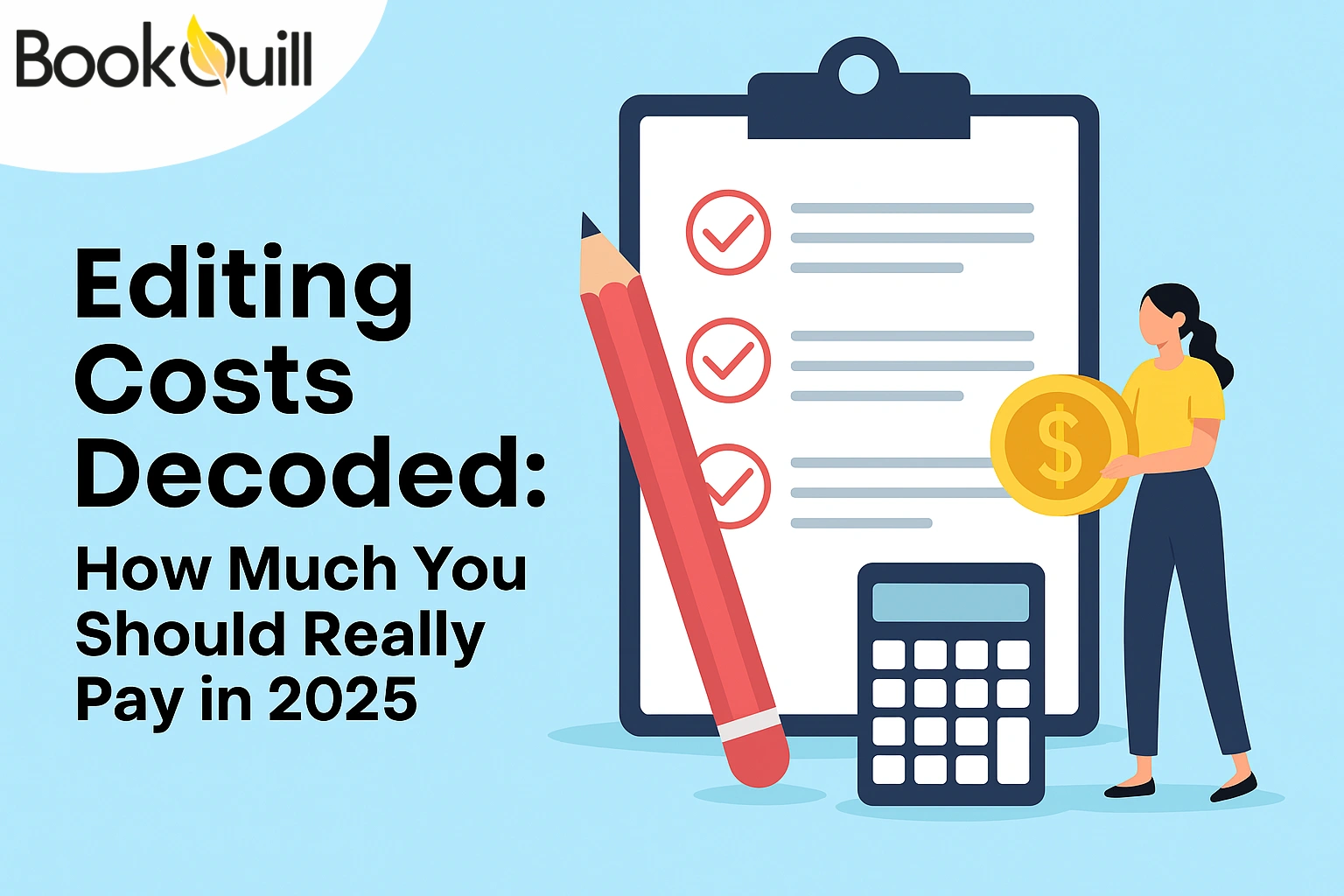Table of Contents
Explore Blogs
Trending on Ebook
How to Create a Compelling Biography in 7 Steps

Many people view biography as dull and uninteresting, but surprisingly, 3-in-10 of U.S. adults enjoy reading this genre. If you are writing a biography, it’s essential to learn how to perfect it. You may have read many biographies, but only a few stick in your memory. Why does this happen? All of them are written for one purpose – to convey the life journey. The ones that stand out are the compelling ones. No one wants to go through a dull, lifeless account of someone’s achievements. Readers want something gripping, relatable, and human.
A compelling biography not only lists facts but also turns someone’s life journey into a story worth reading. So, how do you go from boring to brilliant? Let’s read it step by step. By the time you’re done, you’ll not only know how to create a page-turner, whether it’s for a family member, a historical figure, or yourself, but you’ll also understand the value of presenting your story through a professional book printing service to make it truly shine.
Key Takeaways
- Purpose Drives Content Knowing why you’re writing shapes your tone and details. Your motivation guides the narrative, ensuring it resonates with readers and achieves your intended impact.
- Research Is Important Gather stories, quotes, and dates to build authenticity. Comprehensive research enriches your autobiography with credible details, making it more engaging and believable.
- Structure Creates Flow Chronological or thematic styles keep readers hooked. A well-organized structure ensures your story is easy to follow and maintains reader interest throughout.
- Show Personality Quirks and flaws make your subject relatable. Authenticity and vulnerability in your writing help readers connect with your story on a personal level.
- Editing Matters Polish your draft and ensure accuracy. Thorough editing improves readability, eliminates errors, and refines your narrative for a professional finish.
- Presentation Counts Use a premium book printing service for the finest printing. High-quality presentation enhances the visual appeal and overall impact of your autobiography.
Define Your Purpose
You may know what a biography is, but do you know how to start writing it? You have to figure out the purpose of writing it as it shapes everything—tone, style, content, and even the final format.
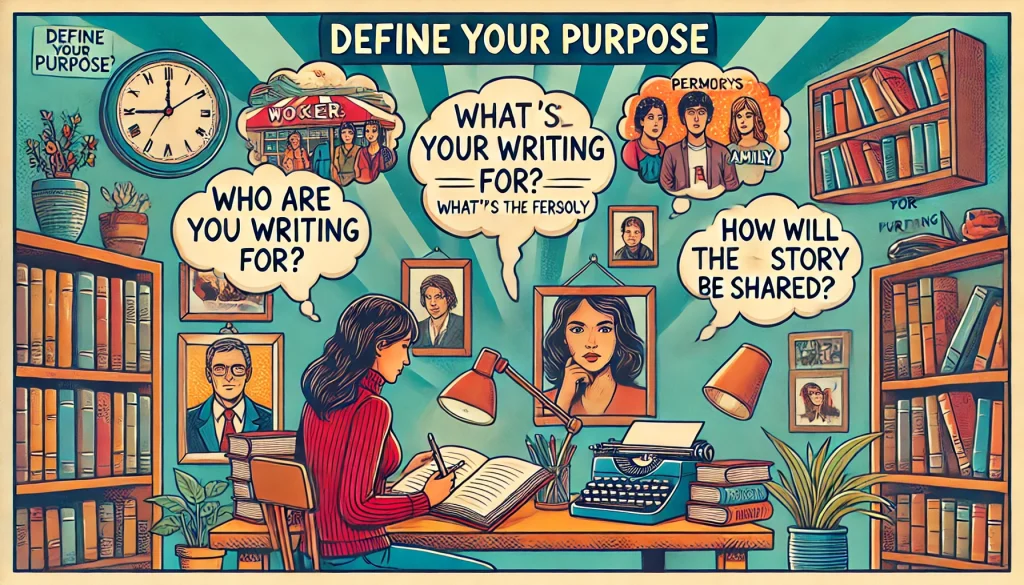
Who Are You Writing For?
Your audience matters. If you’re writing for fans of a famous person, you’ll include different details than you would for a personal family biography. Readers want stories that feel tailored to them.
What’s the Focus?
Are you highlighting achievements, struggles, or both? A professional biography might focus on career milestones, while a personal one could dig deep into relationships and personal growth.
How Will the Story Be Shared?
Planning to publish it? Think ahead. You might use a book printing service if you’re printing in bulk or the best book print-on-demand service for smaller runs.
By defining your purpose, you’re giving your biography a clear direction. Without this, your writing might feel scattered, and your readers might lose interest. A compelling biography doesn’t just tell a story—it delivers a message that resonates.
Gather All Relevant Information
A biography isn’t just random facts thrown together. It’s about creating a complete picture of someone’s life. The more details you have, the better your story will be. For example, Matthew Perry’s biography has sold more than 2.5 million copies. Do you know why?
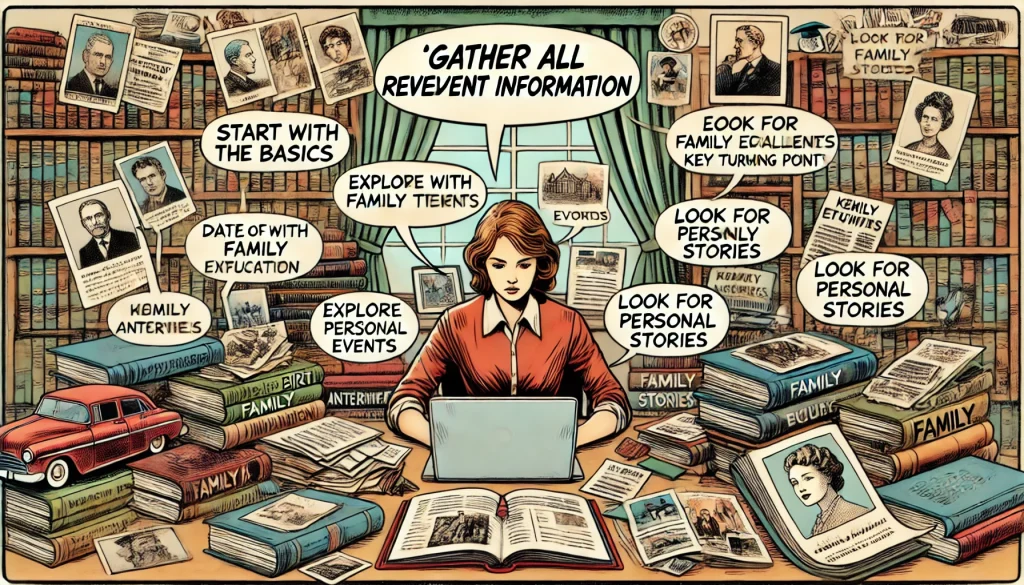
It’s because it has details about his life and career. From his near-death experience to his struggle with alcohol. It has everything. So, when writing a biography, you must:
Start with the Basics
Collect essential details like their date of birth, hometown, family background, education, and career. These form the foundation of your story.
Explore Key Events
What were the major turning points in their life? Talk about the challenges they faced, achievements they celebrated, and moments that shaped who they became.
Look for Personal Stories
Interviews with the subject (if possible) or their close circle can uncover anecdotes that bring their personality to life. If that’s not an option, go with secondary sources like a sample biography, archives, or articles.
Organize Your Research
A timeline or biography template can help you keep everything in order. This makes it easier to spot connections between events and create a natural flow.
Arm yourself with enough material because a weak biography lacks depth because the writer didn’t dig deep enough. Don’t let that be you.
Craft a Strong Narrative Structure
A good biography needs structure; without it, your story risks feeling jumbled, like pieces of a puzzle that don’t quite fit together. A compelling narrative should feel like a journey, not just a series of bullet points. To keep your readers engaged, it’s essential to pace the story effectively and maintain a focus on the big picture.
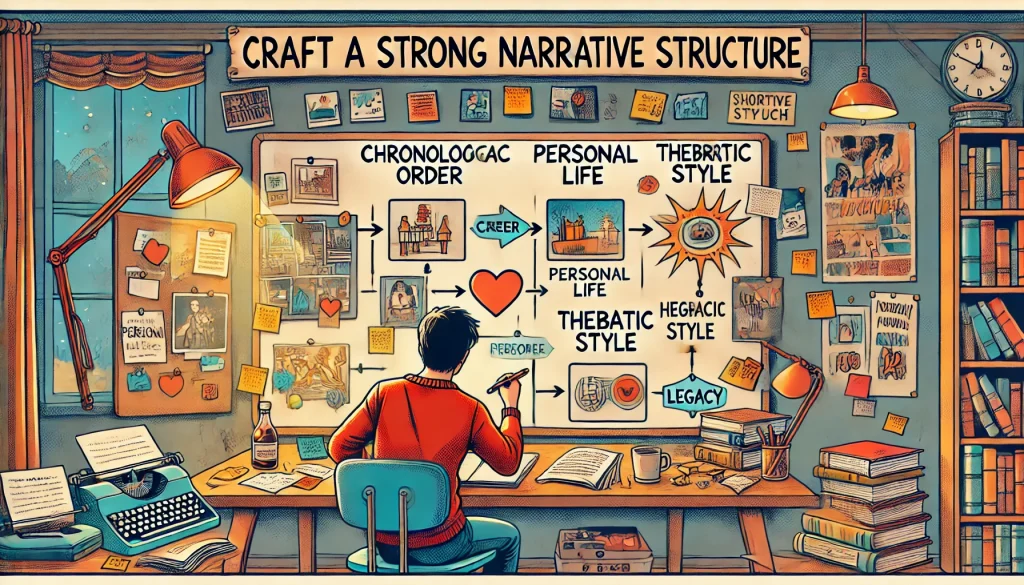
Research supports this approach, showing that narratives enhance comprehension and retention, making your story more memorable. Narrative texts are generally easier to understand and recall compared to expository ones, highlighting their effectiveness as communication tools. By framing your biography as a narrative, you can ensure that your story is not only captivating but also unforgettable.
Choose a Format that Fits the Story
- Chronological Order Perfect for historical figures or straightforward life stories. Start at the beginning and work your way through.
- Thematic Approach Ideal for more complex stories. Group events by themes like “career,” “personal life,” or “legacy.”
- Hybrid Style Combine both for a dynamic flow.
Start with a Hook
How to write a biography that stands out? Start with an opening that grabs attention right away. A strong hook can make the difference between readers reading the story or losing interest. Here are some hook ideas:
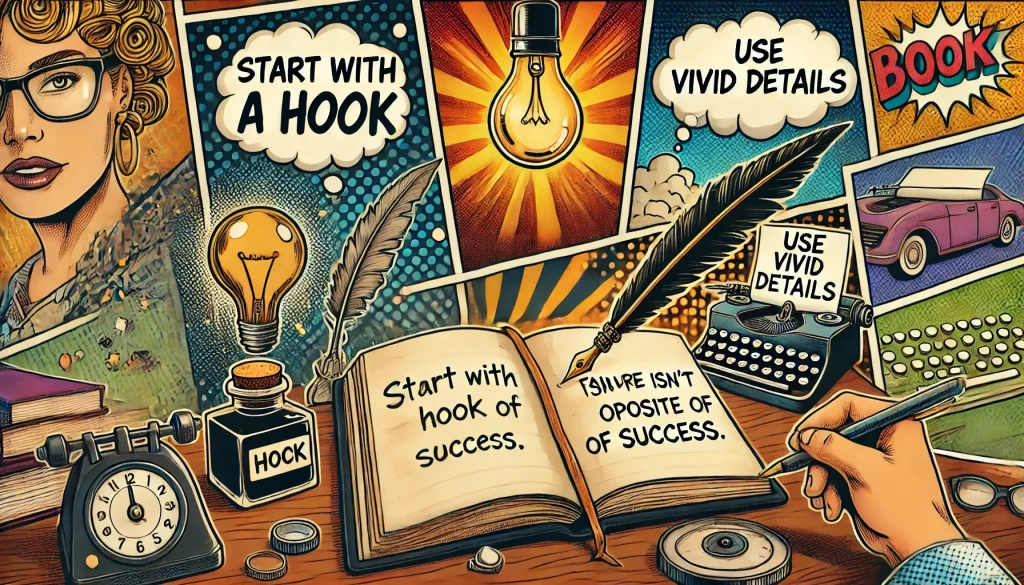
Skip the Predictable
Instead of beginning with “John was born on…” or a long-winded family history, jump into a dramatic moment or a life-changing event. Think of a pivotal challenge they overcame, a milestone they achieved, or a moment that truly defines their character. Capturing the core of their journey in a compelling way will engage your audience from the very start.
Use Vivid Details
Paint a picture with your words in your biography. Don’t just describe the event—make your readers feel it. For instance, instead of saying, “She gave a speech that inspired many,” try, “As she stood under the glaring stage lights, her voice cracked with emotion, and the audience held their breath, captivated by every word.”
Ask a Provocative Question
Engage your readers by posing a question that the biography will answer. For example, “What drives someone to change the world despite overwhelming odds?” This builds curiosity and sets the tone for the narrative.
Quote Them or Others About Them
Start with a striking quote—either from the subject or about the subject—that encapsulates their character or life journey. For instance, “The first thing he told me was, ‘Failure isn’t the opposite of success; it’s part of it.’ And that’s how he lived his life.”
Tie the Hook to the Rest of the Story
Whatever hook you choose, make sure it flows naturally into the biography’s narrative. A compelling opening that feels disconnected from the main story can confuse readers rather than draw them in.
Keep It Smooth
Use transitions to connect events. For example, if someone uses an innovative platform to share their biography, show how that decision is tied to their career or legacy.
Highlight Key Events and Achievements
Let’s be clear—this isn’t a resume. It’s a story. Instead of listing every little thing the person has done, focus on the moments that matter most. Your readers want to feel the emotions behind the milestones, not just read about them.
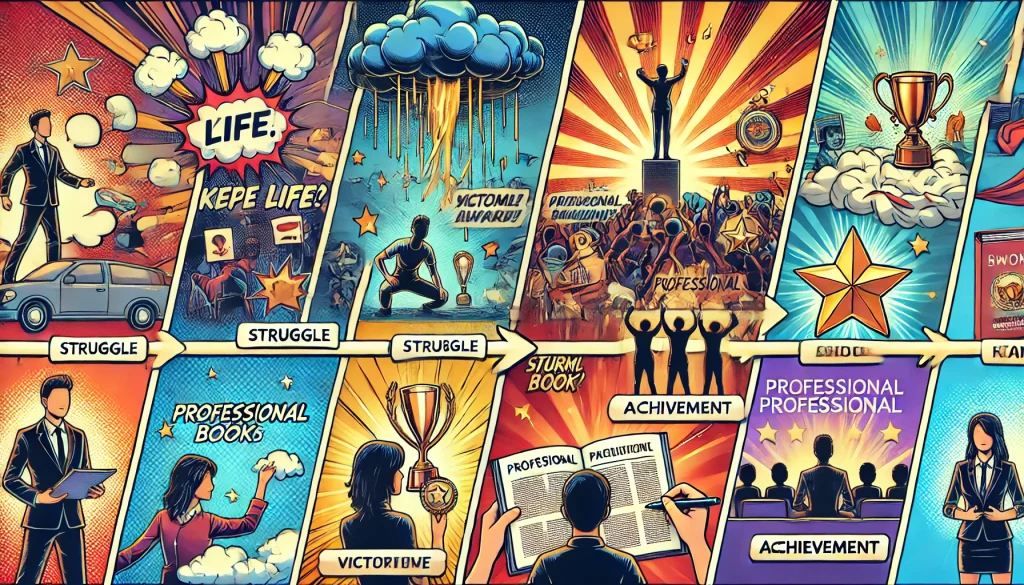
Choose Impactful Events
Highlight major achievements, life-changing decisions, or dramatic challenges. These moments define the person and keep your readers hooked.
Avoid Overload
Too many details can make your biography feel cluttered. Be selective. Depth is more important than breadth.
Use Vivid Descriptions
Don’t just say they won an award—describe what it meant to them. Did it come after years of struggle? How did it change their life?
Connect the Dots
Show how each event leads to the next. For instance, if they chose a professional book printing service to publish their memoirs, explain why that step was significant in their journey.
Bring the Subject to Life with Personality
Facts alone won’t do the job—you need to add personality to turn a static figure into a living, breathing person. After reading about such figures, readers cry, laugh, or feel inspired because they connect emotionally with the subject. To make it original, you should try these things:
Show, Don’t Tell
Rather than stating, “They were generous,” share a touching moment: “They once donated their entire bonus to fund a struggling artist’s dream exhibit.” These stories paint a vivid picture of your subject’s character, making them relatable and real.
Use Quotes to Amplify their Voice.
A well-placed quote can work wonders. Whether it’s a personal mantra like, “Persistence beats talent when talent doesn’t work hard,” or a heartfelt reflection, quotes give readers a sense of the subject’s inner world and personality.
Balance Strengths and Flaws
Highlighting struggles and imperfections adds depth. Maybe they battled self-doubt before achieving success or made mistakes they later overcame. These details make them human and relatable, showing readers that greatness comes with challenges.
Using a biography template can help you organize these personal details without losing track of the big picture.
Edit and Polish for Clarity and Impact
Writing is rewriting—plain and simple. Your first draft is just the beginning, so don’t stress if it’s not perfect. What truly matters is the next refining process.
Revise for Clarity
Go through your draft with a fresh set of eyes. Ensure your ideas flow logically and transitions between sections feel smooth. Each paragraph should serve the bigger picture, guiding readers seamlessly through the story.
Cut the Fluff
Every sentence must add value. If a sentence doesn’t push the story forward, it’s clutter. Be ruthless—delete unnecessary details or repetitive phrases. A lean, focused biography keeps readers engaged.
Check for Accuracy
Verify all your facts, dates, and names. A biography with errors not only confuses readers but also damages your credibility. Cross-check your sources to ensure every detail is correct.
Focus on Presentation
If you’re publishing, consider how the final product looks. Opt for a premium book printing service to deliver a polished and professional appearance. The effort you put into editing and presentation shows readers that this story matters.
Add Finishing Touches
The final touches are where your biography transforms from a solid draft into a polished masterpiece. Think of it as dressing up for a big event—you want every detail to shine. These small yet significant elements elevate the reading experience and make the story unforgettable.
Add Visual Elements
Including photos, letters, or other artifacts can breathe life into your biography. Visuals help the reader connect emotionally and create a stronger sense of authenticity. For instance, a childhood photo or a handwritten note can provide a glimpse into your subject’s world. They break up the text and add depth to the narrative, making it more engaging.
Craft a Memorable Title
A title is your first chance to grab attention. It should reflect the essence of the subject’s life while sparking curiosity. A great title is not just functional; it’s a hook. For example, “Rising from Ashes: The Story of Jane Doe” immediately hints at struggle and triumph. Put thought into this step—your title is what people remember.
Reflect on Their Legacy
End with a powerful conclusion that answers the question: Why does this story matter? Highlight the person’s lasting impact, whether it’s on their family, community, or the world. A compelling reflection leaves the reader feeling inspired and connected, creating a lasting impression.
Conclusion
When writing a biography, it’s important to remember that it’s not just a collection of facts. It’s not just about looking back; it’s about creating a legacy that truly connects with people. To do this, start by understanding your purpose. Take the time to research thoroughly, organize your story, and pay attention to every detail. This way, you can create a biography that not only shares information but also inspires others.
Whether you’re telling the story of a loved one, a famous figure, or your own journey, remember that how you present it matters. This is why pairing the biography with premium book printing services is essential for it to become truly timeless and cherished.
FAQs
What is the best biography template to use?
The best template depends on your focus. A chronological timeline works well for beginners, while a thematic approach suits more complex stories.
How do I choose a title for a biography?
Pick a title that reflects the subject’s life or legacy. It should be intriguing and relevant, sparking curiosity while giving a glimpse of the story’s essence. Titles often work best when they highlight the subject’s defining quality or achievement.
Can I do self-printing?
Yes, you can self-print for smaller quantities. Look into local print shops or invest in a good-quality printer. However, for larger quantities, you can hire affordable book printing services to save money and get the best work in bulk.
What should be included in a biography for a book?
Include personal background, major achievements, struggles, and their impact on others. Photos and anecdotes add a personal touch.
How can I make a biography more engaging for readers?
Focus on storytelling. Use vivid descriptions, personal anecdotes, and emotional moments to connect with readers. Avoid overloading them with dry facts and instead bring the subject’s personality and experiences to life through relatable, human details.
About Author
Hi My name is Micheal Adams, When I am not watching horror movies and helping my kids with homework or reading my favorite fantasy/supernatural novels – I’m writing to guide aspiring authors. I focus on exploring and simplifying both the technical aspects and the often-overlooked details of book writing and publishing so I can empower new writers to climb the Amazon bestseller list and connect with more readers.




